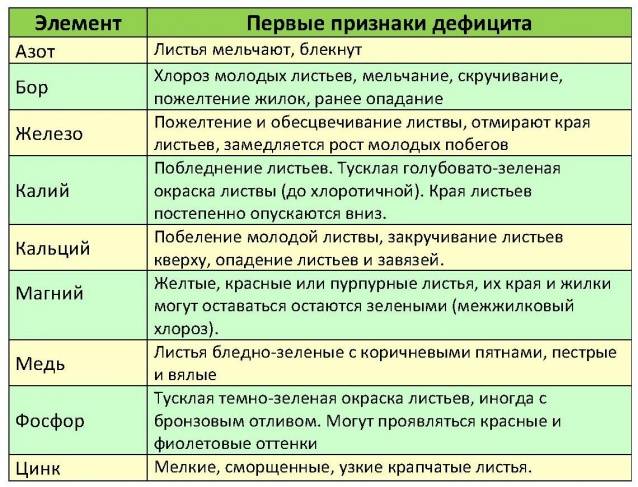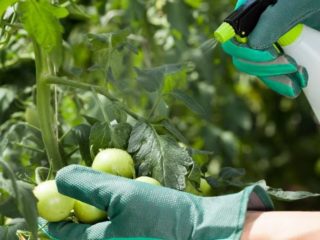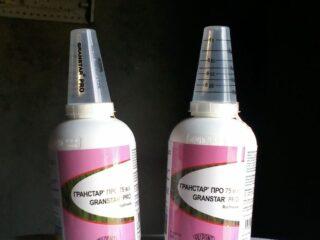Content
Feeding trees and shrubs in spring is the most important stage of care, on which the decorative qualities of plants, their growth and the amount of harvest depend. Perennial plants greatly deplete the soil, because from year to year they require nutrition. That is why it is important to fertilize the garden several times a season with special products. Adequate nutrition is the key to abundant flowering, thick ovaries and a generous harvest. In addition, regular feeding minimizes the risk of infection of trees and shrubs and is responsible for their health. The garden is fertilized for the first time in the year in early spring, then fertilizing is continued at certain intervals.
An approximate calendar for fertilizing fruit and berry crops will be proposed in this article. Here you can learn about fertilizer application rates and find recommendations on how best to feed certain fruit trees and shrubs in the spring.
Feeding options
Garden crops, as well as garden crops, can be fertilized with two types of preparations: mineral and organic. Since with the arrival of spring and warming, growth of any plants is activated and vegetation accelerates, it is at this time that they require a large amount of nutrition.
The most necessary component at this stage of development of fruit trees and shrubs is nitrogen. This substance is responsible for the growth of green mass, and it can be found both in mineral complexes and in organic fertilizers.
At the second stage of development, trees need potassium and phosphorus, because the number of ovaries, and therefore the abundance of the future harvest, depends on these components.
The health of plants in the garden, as well as the quality and taste of the fruits, are directly related to the content of such elements in the soil as:
- hydrogen;
- carbon;
- magnesium;
- calcium;
- sulfur;
- iron;
- copper;
- manganese;
- cobalt;
- boron
A tree can find hydrogen and carbon directly in the soil or in the air, but with microelements everything is much more complicated - they are contained in the required quantity only in balanced mineral complexes.
This does not mean that using organics is ineffective. Vice versa, organic fertilizers are more preferable for feeding fruit trees and shrubs. But in order to benefit the garden, you need to be able to correctly calculate the amount and proportions of such fertilizing, because excess organic matter has a very bad effect on the condition of the trees.
In addition, finding organic fertilizers in the modern world is not so easy: only residents of rural areas have enough of them. Buying cow manure or bird droppings is not economically feasible, since these fertilizers are not cheap.
We recommend using liquid organic-biological fertilizer Isabion Expert Garden. This is a universal remedy suitable for most crops growing in your garden (including a wide range of fruits, berries and ornamental flowers). Isabion improves crop ovaries, is suitable for treatment both before and after flowering, improves fruit set and size.
Garden fertilization schedule
In order to navigate the timing of spring fertilizing, the gardener can look at the table below. However, even a beginner should understand that there are no exact dates in this matter: much depends on the climate in the region, weather conditions and the type of trees and shrubs.
Not all fertilizing of an orchard is the same; on the contrary, each stage of fertilizing trees has its own characteristics. The amount of nutrients and composition depend on many factors. There are the following main feedings for fruit and berry plants:
- fertilizer mature fruit trees;
- fertilizing berry bushes;
- foliar or soil fertilizing;
- fertilizing the soil when planting a tree or shrub;
- feeding seedlings and young plants;
- fertilizing the garden at different stages of the growing season (before flowering, during flowering and after flowering).
First fertilization of the garden with nitrogen
In early spring, there is no question about what fertilizers to choose for the garden - at this time, all plants without exception need nitrogen. However The form of nitrogen-containing preparations can have a lot of options - it is selected individually for a particular plant:
- Apple and pear trees Nitrogen is best absorbed from urea (carbamide), humus, ammonium nitrate, and bird droppings. After flowering of these trees, superphosphate should be added, potassium sulfate or other potash fertilizer.
- Cherry and plum trees in early spring you should feed with the same urea or ammonium nitrate. While the cherries and plums are in bloom, bird droppings should be added. And at the end of flowering - compost, liquid manure or dry organic mixtures.
- Berry bushes It is advisable to fertilize with nitrophoska, potassium nitrate. In early spring, you can add wood ash with urea to the root of the bush (half a glass of ash is mixed with three tablespoons of urea and dissolve this mixture in a bucket of water). A mixture of rotted manure and saltpeter (a handful of saltpeter per bucket of manure) saturates the soil well.
When and how to apply fertilizer
It is necessary to start fertilizing fruit trees and shrubs in early spring - in March. If by this time the snow has not completely melted, but the ground has already thawed a little, you can start fertilizing. You should not sprinkle fertilizers on frozen soil; until it thaws, most of the nitrogen will simply evaporate.
It is most convenient to use industrial soluble granules. They can simply be scattered directly on the ground or on the snow around the trunk (the soil must be dug up in the fall). Surface fertilizer is good because melt water will gradually dissolve the granules, and nutrients will begin to penetrate into the roots in measured doses.
You can reduce the radius - 50 cm will be quite enough for nitrogenous fertilizers, because the crown of old trees can be very large. It is within a radius of 50 cm from the trunk that most of the root endings are concentrated, which absorb nutrients.
An adult fruit tree will need about 100-120 grams of nitrogen mixture (this is 2-3 handfuls). A young tree or shrub needs to be fed with one handful of nitrogen - about 35-40 grams.
It is important to understand that any fertilizing must be combined with regular moistening of the soil, because water is the conductor of fertilizer to the roots of the tree. In early spring, melt water is usually sufficient, but if there is no snow in the region, it will be necessary to water the plant before and after fertilizing. When the garden is located on a slope, it is better to postpone applying fertilizers a little, since melt water can simply wash them away.
Organic products are recommended for use on young seedlings and berry bushes. Urea, liquid manure or bird droppings are dissolved in water and the soil around the plant is watered with this mixture. Under one young tree you need to pour 4-5 liters of this solution, and it is prepared in the following proportions:
- for 10 liters of water 300 grams of urea;
- 4 liters of liquid manure per bucket of water;
- 1.5 liters of liquid chicken manure per 10 liter bucket.
Fertilizing the garden in April
On warm April days, fruit trees begin to bloom, and young leaves appear on their shoots. During this period, plants are in dire need of potassium and phosphorus - these are the components that need to be selected for the second feeding of the garden.
But you need to use potassium and phosphorus in turn; it is better not to add them together. In the first half of April, the soil is fertilized with phosphorus compounds (superphosphate, for example). It is recommended to embed fertilizer granules into the soil near the trunk of a tree or at the roots of a bush. An adult plant will need about 50-60 grams of phosphorus, and a young seedling will need 30 grams.
It is not recommended to apply potassium under trees in its pure form. It is better to use complex mixtures with this substance, such as potassium magnesium, potassium sulfate, potassium salt, and stove ash. For an adult tree, about 20-25 grams will be required; seedlings are fed with half the specified dose.
At the end of April, when the fruits have faded, you can add organic matter. Herbal infusion or “green fertilizer” is very effective at this stage of the growing season. To prepare it, take freshly cut grass and fill it with water. After this, the container with the infusion must be covered with a thick film, in which several holes must be made in advance. “Green fertilizer” must be infused for at least three weeks, and before use it is diluted with water in a ratio of 1:10.
May fertilizers
With the arrival of May comes the turn of the last spring feeding of the garden.At this time, ovaries form on the trees and fruits form. The best fertilizer at this stage is considered to be organic matter: humus, compost, vermicompost. If there are no organic fertilizers, you can use mineral complexes with a slight predominance of nitrogen in the composition.
The third feeding technology may have the following options:
- Small depressions are prepared in the soil around the trees where fertilizer is placed.
- The mineral complex or organic matter is dug up along with the soil from the tree trunk circle.
- The soil under the plants is loosened in advance, then fertilizers are mixed with the soil.
- Organic matter or granules are mixed with mulch: straw, dry leaves, sawdust, peat.
Berry bushes bloom profusely in mid-May - it’s time to feed them with urea or liquid manure. To enhance the effect, you can add a little saltpeter or wood ash.
Foliar nutrition
May is a great time for foliar feeding of trees or berry bushes. Nutrient solutions are prepared in the same way as described above, but the concentration of active substances should be reduced.
Leaves and young shoots quickly absorb valuable mineral components, and the trees are well saturated. Plants should be sprayed in the early morning or evening, in cloudy weather. If foliar feeding is carried out on a hot sunny day, the plant is guaranteed to burn.
Foliar garden fertilizer is convenient for summer residents who do not constantly live outside the city, but occasionally come to visit their plot. Trees treated in this way will not have to be watered, which is necessary when introducing organic matter or minerals at the root.
Conclusion
Spring fertilizer for the orchard – a vital necessity for most varieties and types of fruit and berry crops. Without sufficient nutrition, it is difficult to expect a good harvest; fed trees are better resistant to diseases and pests.
The gardener must draw up an approximate feeding schedule for his plants and prepare a sufficient amount of suitable fertilizers. It is very important to correctly calculate the dose of fertilizer, properly fertilize and not forget about regular watering.

























